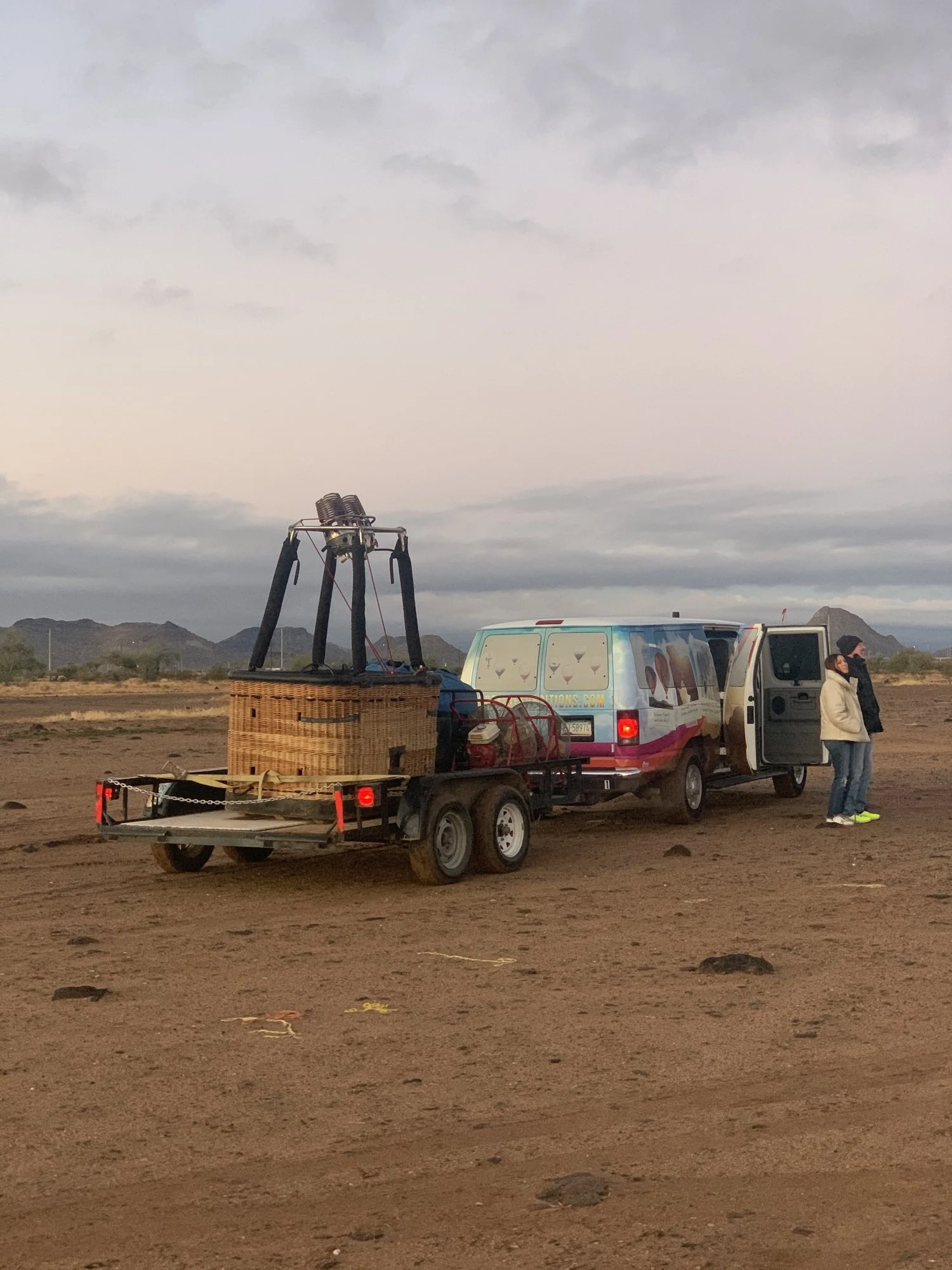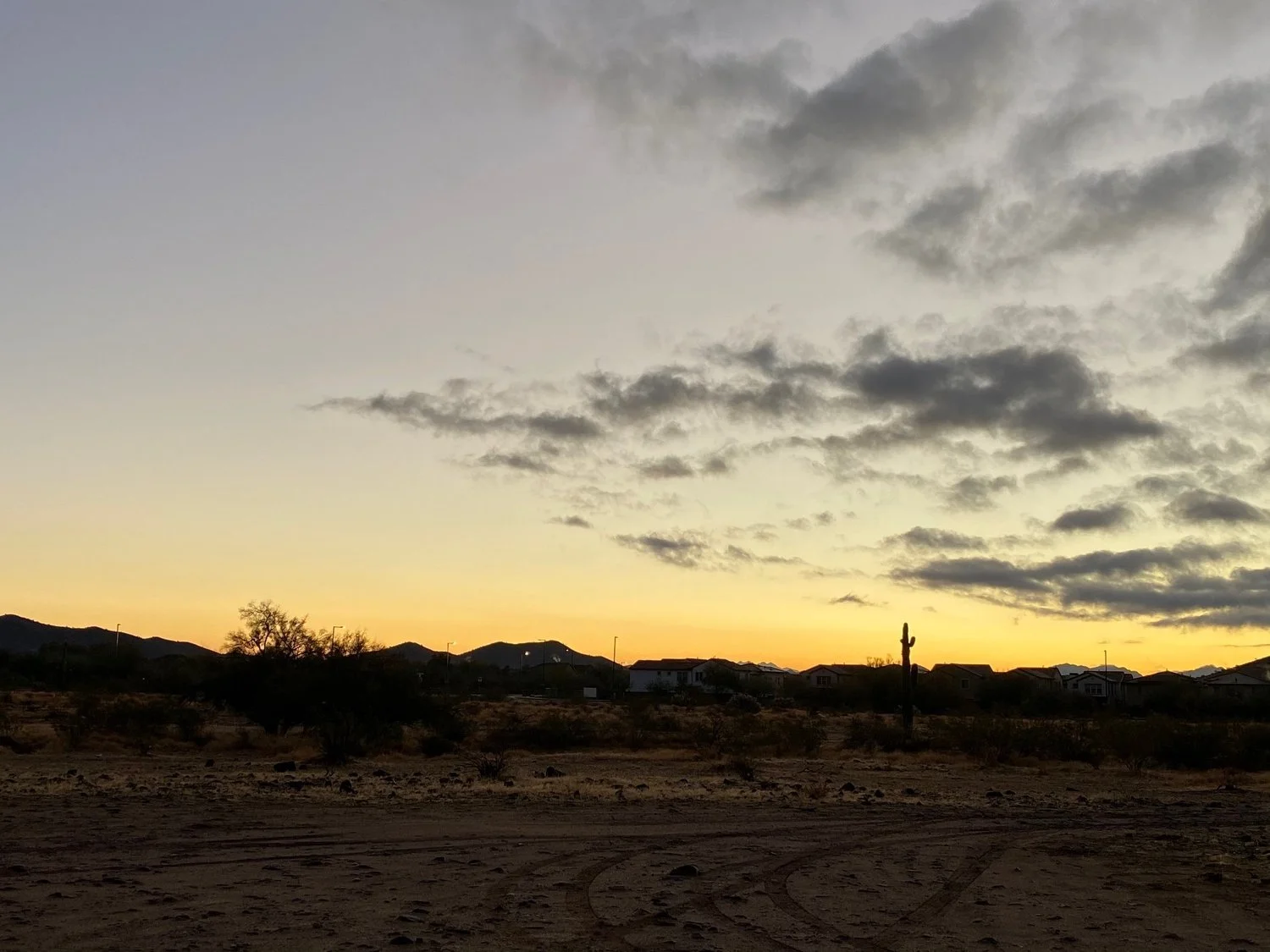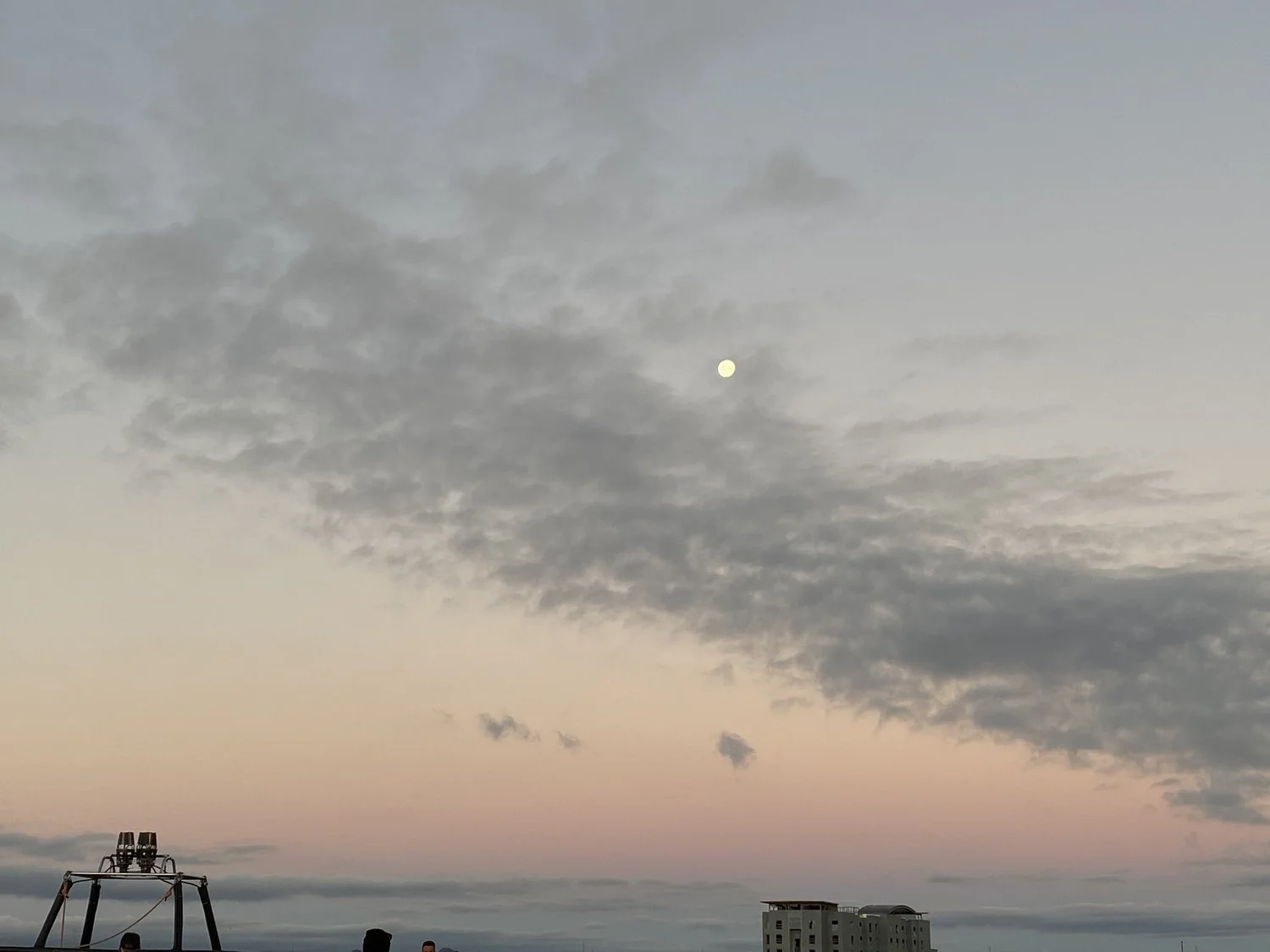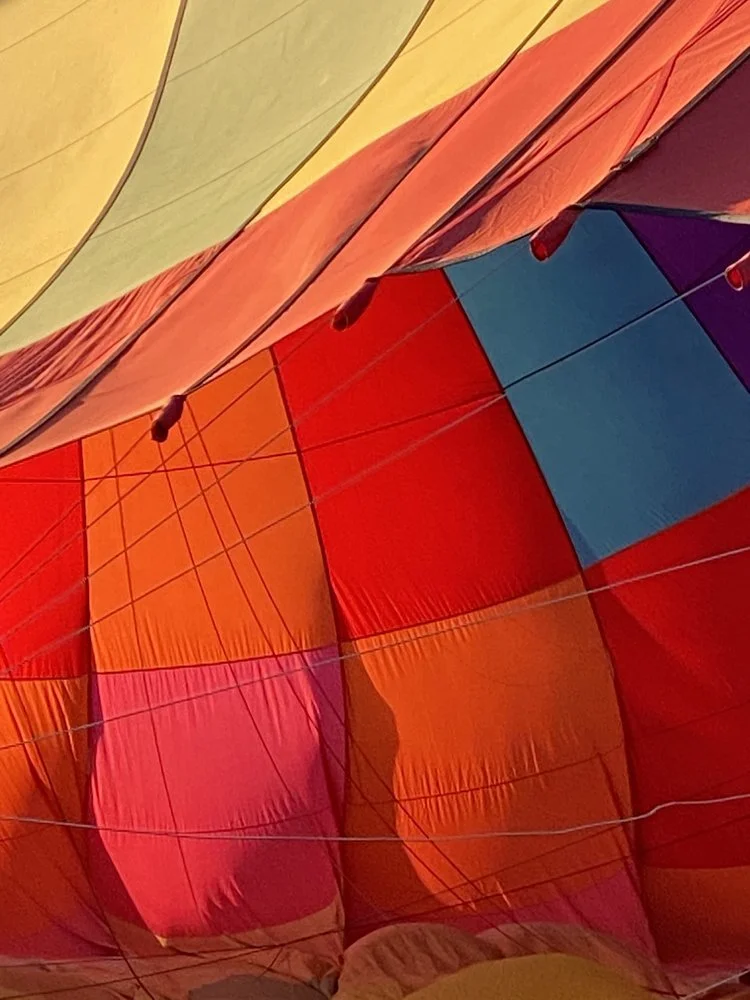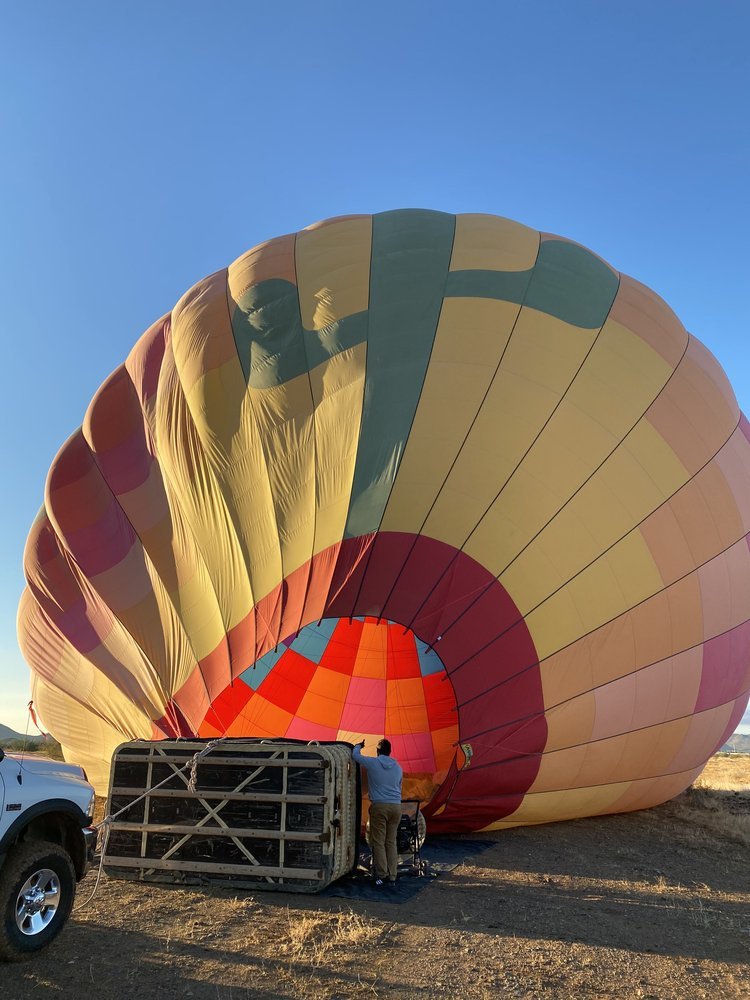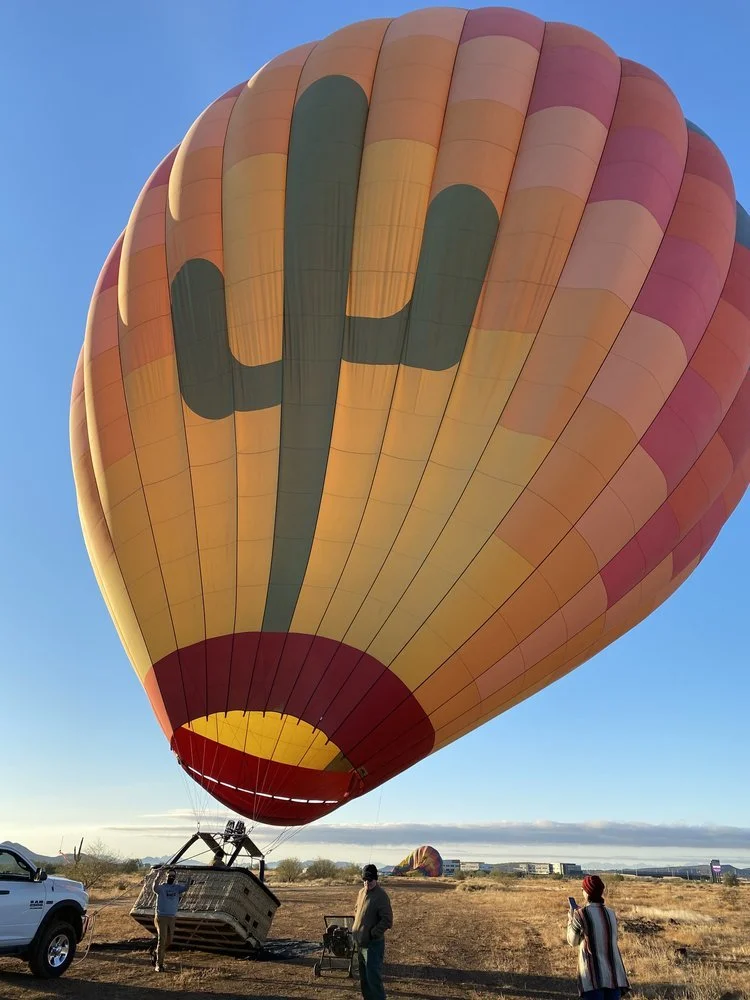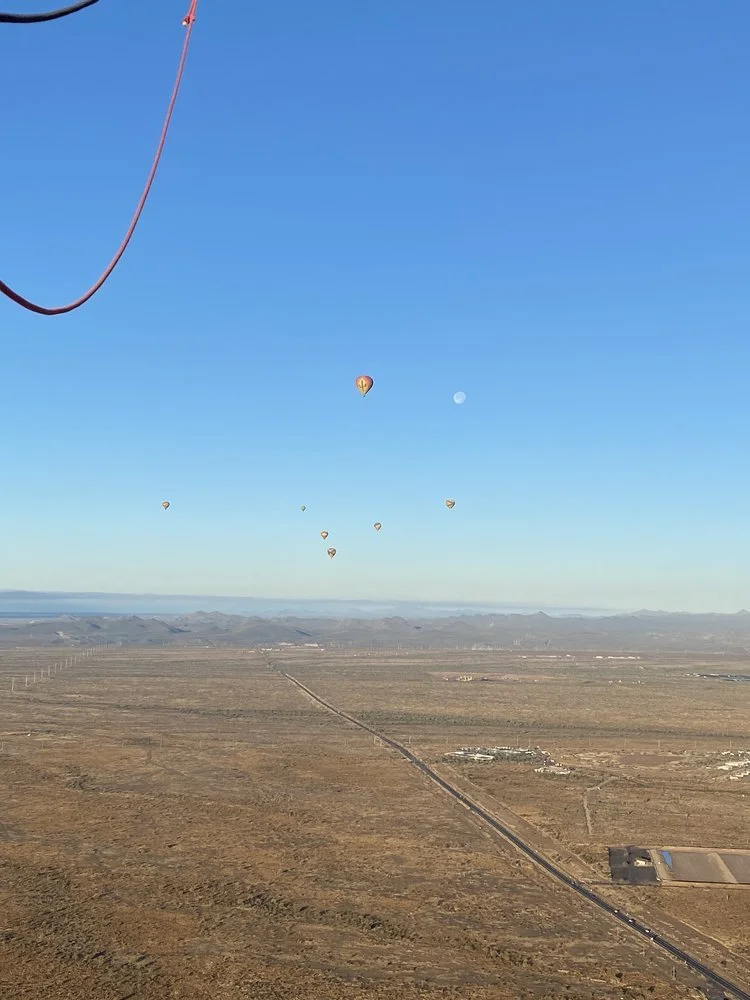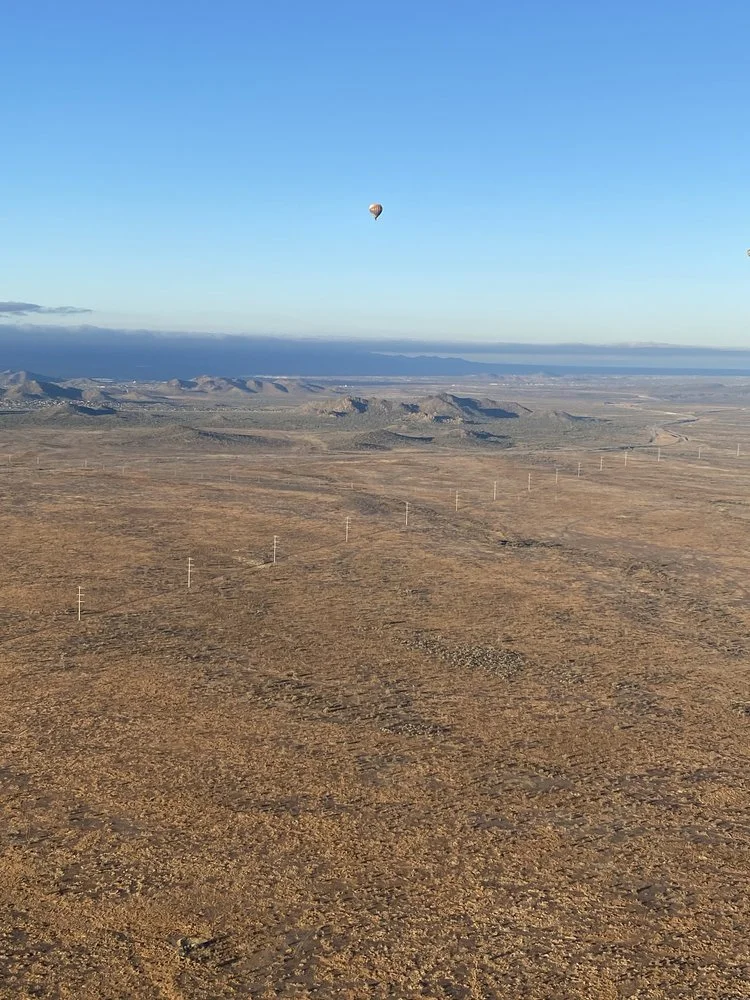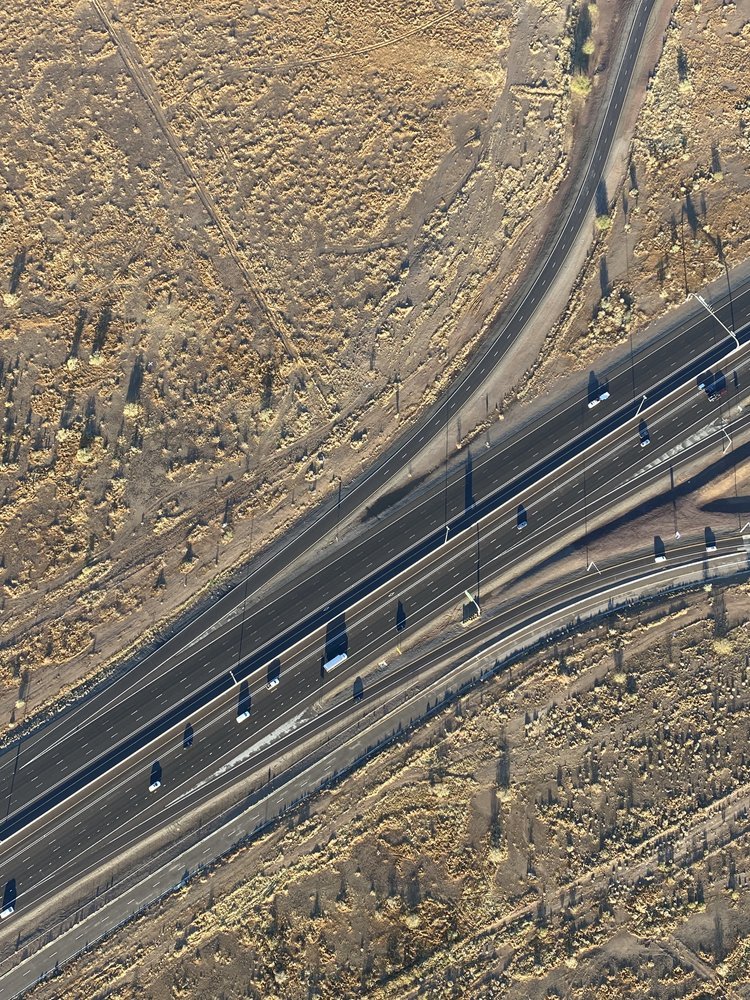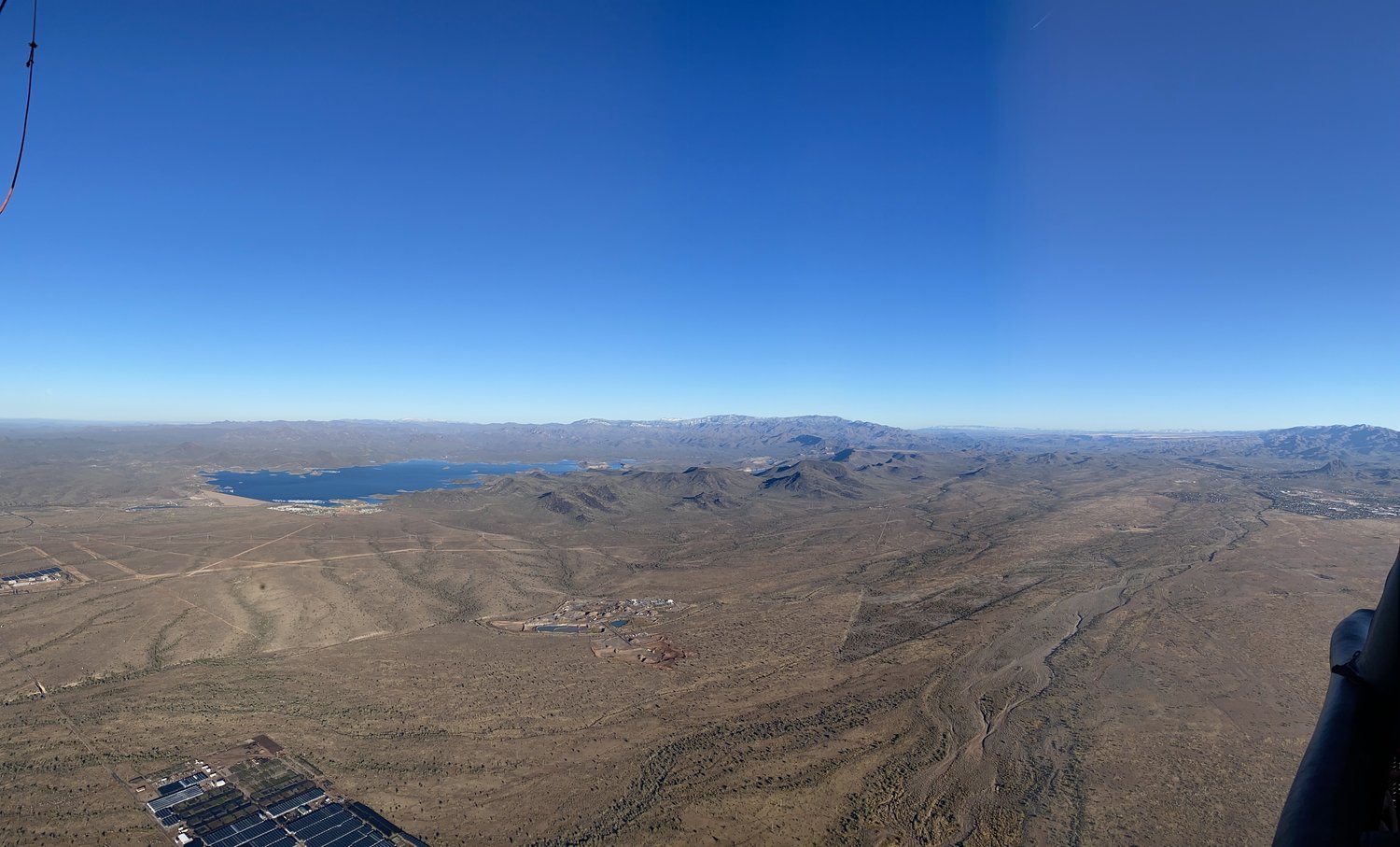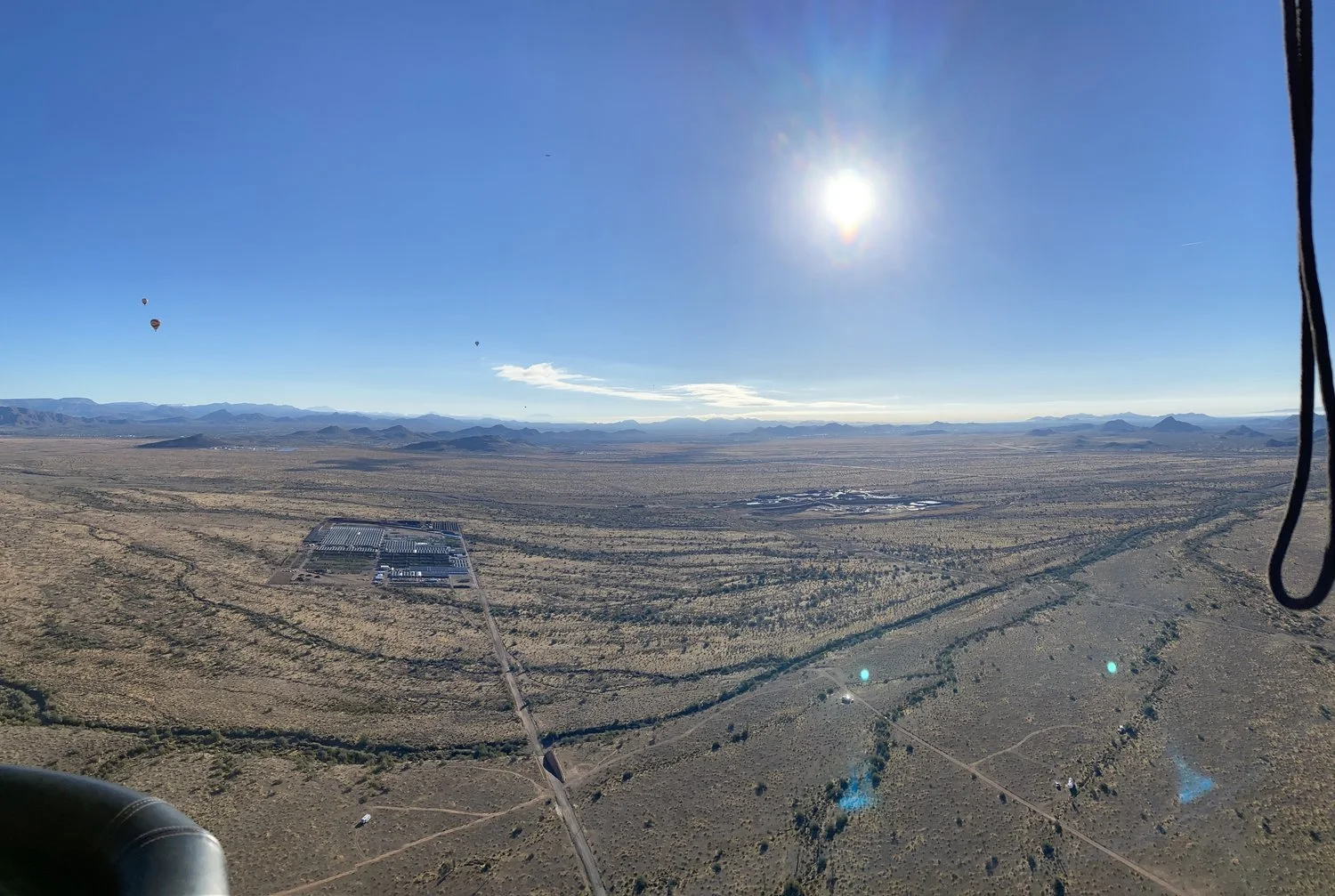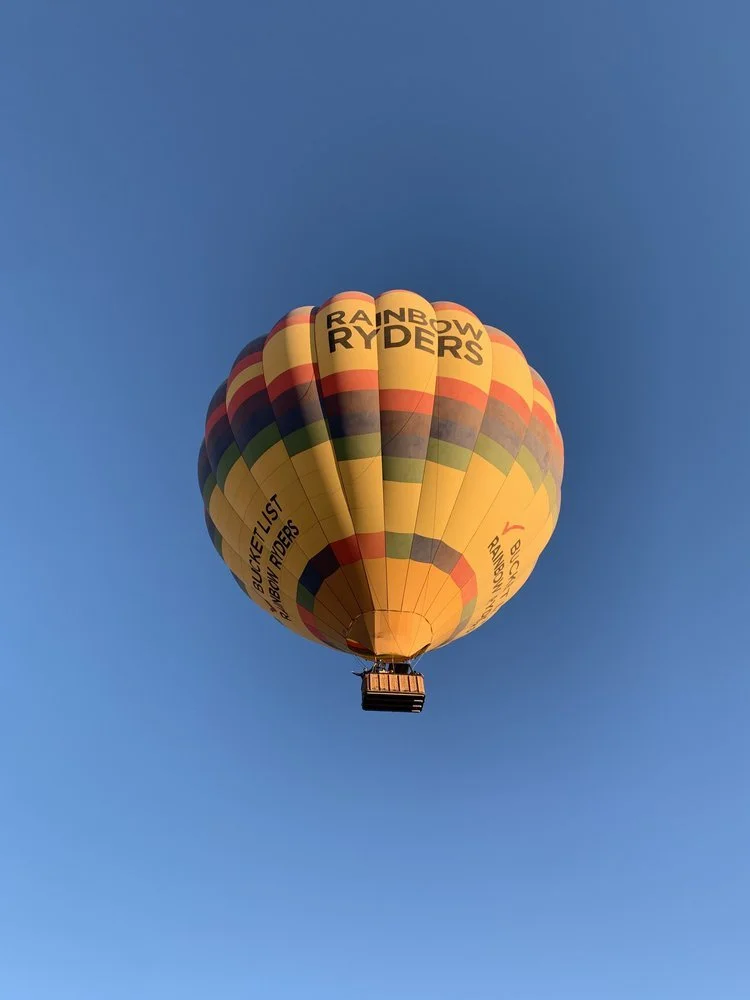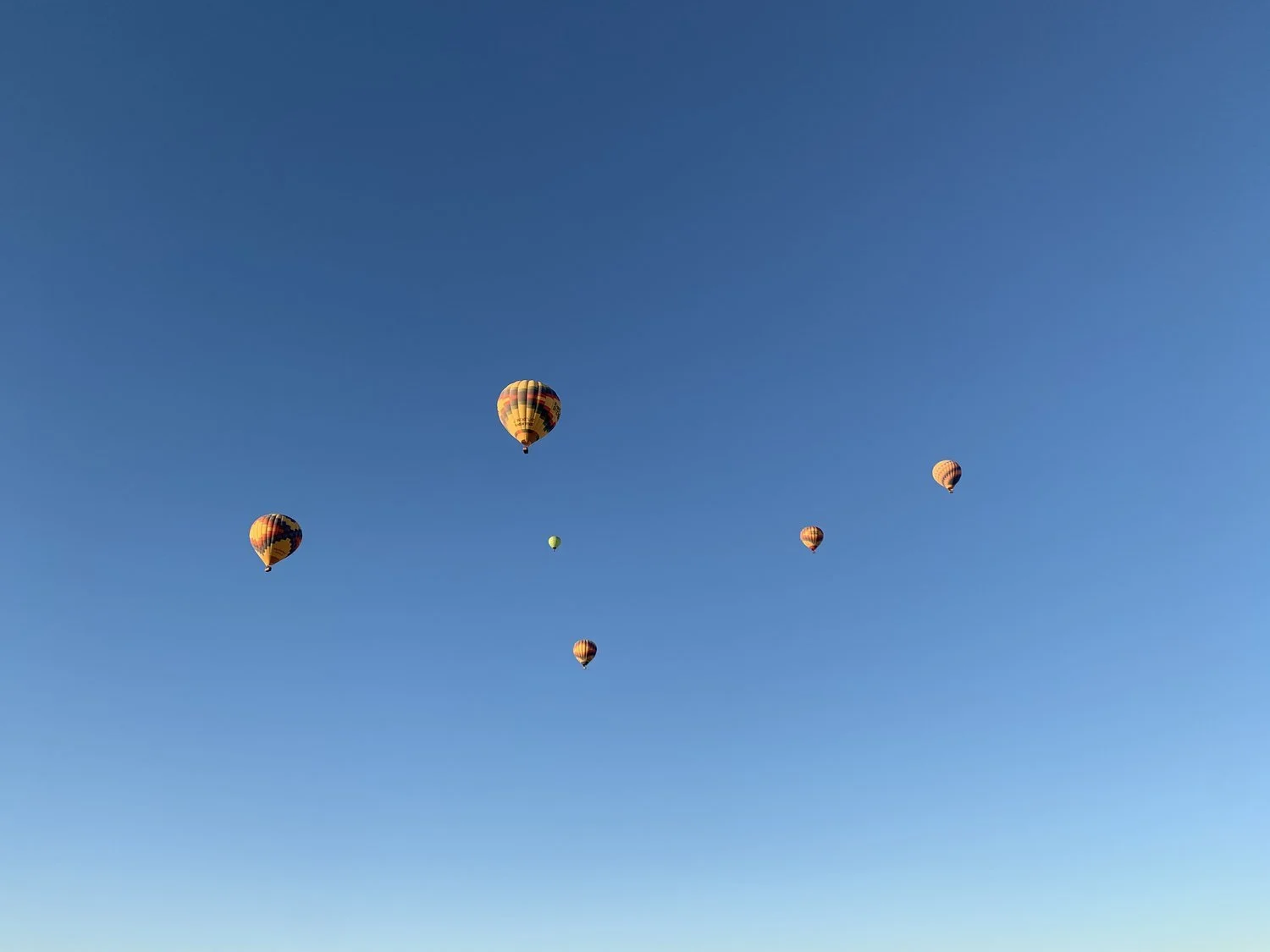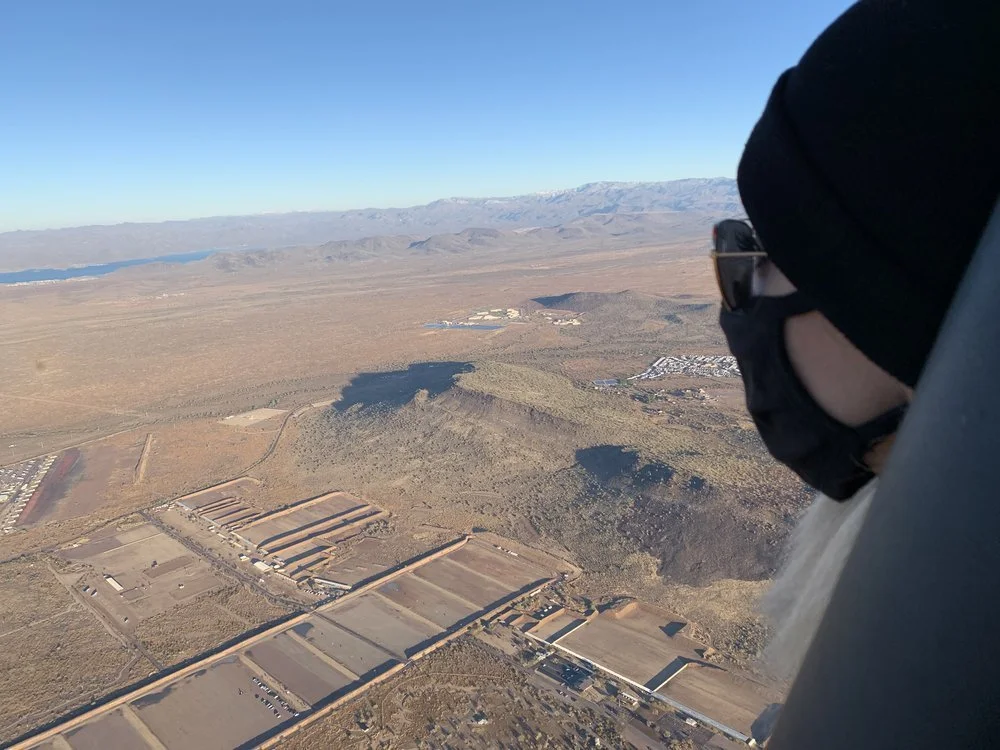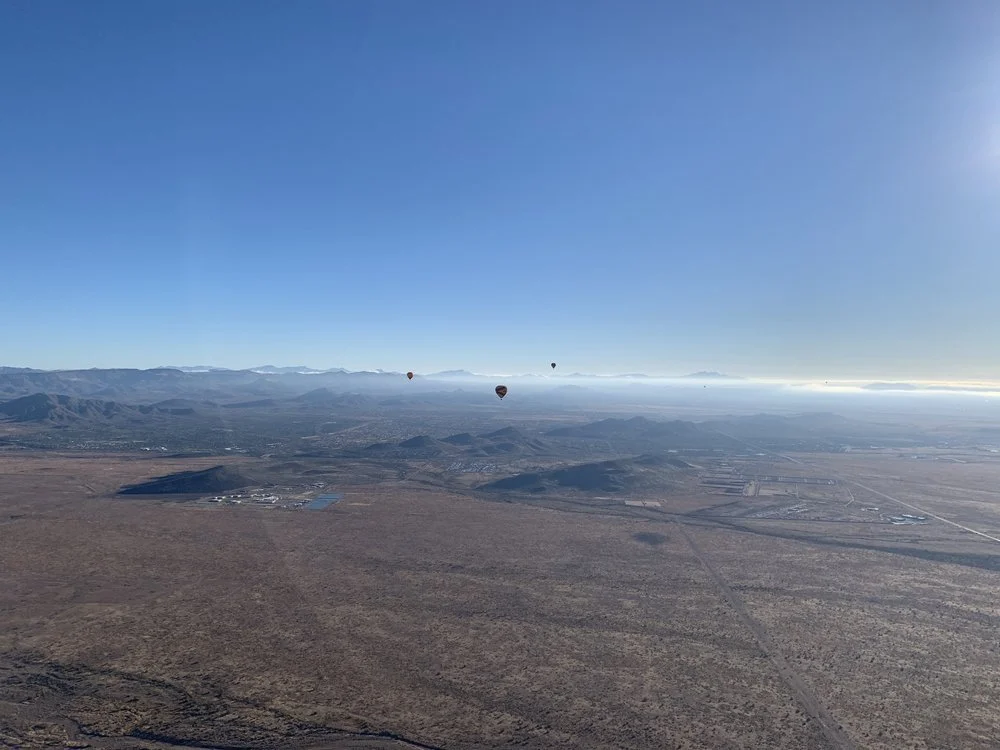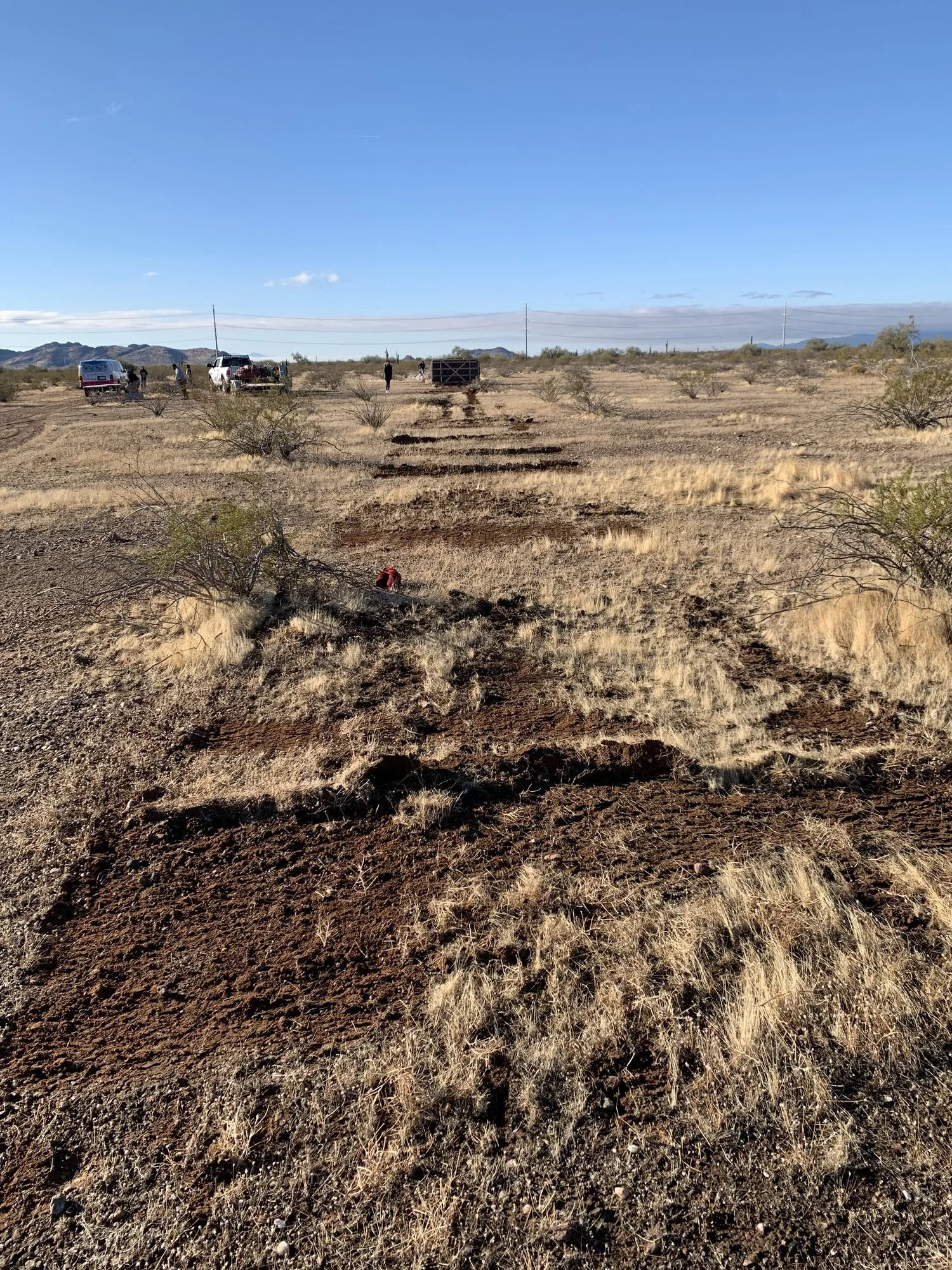Hot-air Ballooning Over Deer Valley, AZ
FACT: I have 749 bucket list items across the world. FACT: Some of them have been “to-do’s” since I was a kid, one of which was going on a hot air balloon ride.
This past January (2021), my cousin came in from San Diego and joined me on this mission to complete this item. Little did I know it would be one of the most breathtaking and terrifying things I’d ever do.
HOW IT WORKS
Getting off of the ground is a long process. If you’re looking to see the sun rise, it requires meeting at 4am (in the winter) and taking a shuttle to a launch site. But what they don’t tell you is the launch site is dependent on wind speed and direction. After throwing up a weather balloon and radioing to other pilots, it was determined we needed to switch sites.
Once we arrived, it was a matter of quick timing. Unfortunately, we had some late people, which meant we watched the sun rise from the ground. Still, it was great to be able to watch the process of inflating the balloon, which requires a significant blast of propane to make happen.
Once the balloon is inflated, you have only a few minutes to hop into the basket before the balloon either collapses or floats off (it’s tied to a pickup truck to support keeping it in place for as long as possible). Once every one is in, the ties are let loose and you’re off!
What It’s Like… Way Up there
Floating into the sky is a surreal, yet very natural experience. It’s calm with little breeze and certainly, very quiet. The difference between a plane and a balloon, at the point of take off, is one is loud and fast and the other is calm and a bit slower (though it floats fast). The highest a balloon can go is 3,000 feet, which we certainly achieved.
THE LANDING
By no means do I want to scare anyone into not doing this, but when we think of hot air balloon rides, we don’t typically think about the actual landing. It just gently floats down to the ground, right? No. We learned from the pilot that usually, when balloons come down, they glide down faster than when they float up and in the case of stronger winds, it’s a 50/50 chance you will land normal (the basket upright). In our case, we not only narrowly escaped death (we were very close to power lines), but severe injuries as well (it was a crash landing).
The landing path - those divots are the “crashes” each time the corner of the basket landed.
About seven minutes before we were to land, I overheard one of the other pilots on the radio saying the ground speed was now around 18 knots - around 9 MPH. While that sounds like nothing, it’s definitely something when trying to land. Initially, we were to land in a field that would have afforded us half that speed. However, an RV was in the way and it required the pilot to quickly blow enough hot air into the balloon to raise us just enough to miss power lines. Once over them, he told us to turn around, squat down, and hang onto the rope handles (standard landing procedure). He also let us know that we were coming in fast and that it might be painful.
Imagine crashing into a car at 30 MPH, then hitting the same car again at 25 MPH, then again at 20 MPH, and so on. This was the exact experience we had while landing, creating several divots for 200 feet. Once we slowed down enough, the wind caught the balloon and it slid the basket, on its side, another 100 feet. It’s amazing no one was hurt.
DEBATING WHETHER IT’S WORTH THE RISK?
The reality is this - weather patterns have changed and in a La Niña/Nor’Easter kind of season, I strongly believe these should simply not be operating. In fact, eight months later, while driving to Sedona, I witnessed a downed balloon on the side of the mountain. I later found out no one survived - one of many unfortunate endings with this activity in 2021. If you choose to still do this, check the weather and wind reports, call the operator and ask for their honest opinion. If you feel it’s risky, ask to reschedule and explain why. They will absolutely switch the date for you because they understand.
NOTE: I’ve left the company name out of it because this is a general problem with this kind of activity.
